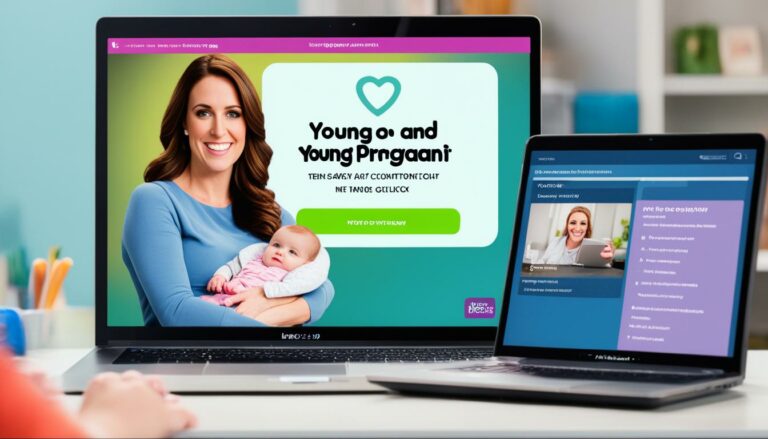Understanding Teen Chatter: What Do Teenagers Talk About?
Teenagers are known for their vibrant and dynamic conversations, but have you ever wondered what they actually talk about? From popular teenage topics to engaging in teenage conversations, teenagers indulge in a wide range of discussions that reflect their interests, concerns, and experiences. Understanding the subjects that captivate their attention can help adults effectively communicate with teenagers and build meaningful relationships.
When it comes to what teenagers talk about, the topics can vary greatly. Some common areas of conversation include:
- School: Teenagers often discuss their classes, teachers, assignments, and exams. They may share stories about funny moments or talk about their academic goals and achievements.
- Hobbies: Many teenagers are passionate about specific hobbies, such as sports, music, art, gaming, or writing. They enjoy talking about their interests, sharing tips, and discussing their favorite athletes, bands, artists, games, or books.
- Relationships: Teenagers navigate the complexities of friendships, crushes, dating, and relationships. They may seek advice or talk about their experiences, both positive and challenging.
- Entertainment: Movies, TV shows, music, and celebrities often dominate teenage conversations. They enjoy talking about the latest releases, their favorite actors or musicians, and engaging in heated debates about plot twists or album rankings.
- Social Issues: Teenagers are passionate about social justice, equality, and pressing global concerns. They discuss topics such as climate change, LGBTQ+ rights, racial equality, mental health, and activism.
By taking an interest in these popular teenage topics and engaging in their conversations, adults can better connect with teenagers and gain insight into their lives. This understanding allows for more effective communication, mutual respect, and the development of meaningful relationships.
Key Takeaways:
- Teenagers engage in conversations about a variety of topics, including school, hobbies, relationships, entertainment, and social issues.
- Understanding popular teenage topics can help adults build better relationships and communicate effectively with teenagers.
- Teenagers appreciate adults who take an interest in their conversations and express genuine curiosity about their lives.
- Engaging in conversations about their interests and concerns can pave the way for open communication and mutual understanding.
- By understanding what teenagers talk about, adults can foster stronger connections and support teenagers in their journey through adolescence.
Tips for Conversations with Teenage Boys

When it comes to talking to teenage boys, it’s important to approach conversations in a way that makes them feel comfortable and engaged. By understanding their interests and using the right conversation starters, you can create meaningful connections and foster open communication. Here are some tips to help you navigate small talk with teenage boys:
1. Avoid Excessive Focus on Appearance
Teenage boys might be self-conscious about their appearance, so it’s best to avoid putting too much emphasis on their looks. Instead, focus on topics that go beyond physical appearance, such as their hobbies, interests, or goals. This will show them that you value their character and individuality.
2. Ask Open-Ended Questions
Engage teenage boys in conversation by asking open-ended questions that encourage them to share more about themselves. Avoid questions that can be answered with a simple “yes” or “no.” For example, instead of asking, “Did you have a good day?” you could ask, “What was the most interesting thing that happened to you today?” This allows them to provide more detailed responses and keeps the conversation flowing.
3. Delve into Specific Topics
Teenage boys often have specific interests that they’re passionate about. To spark engaging conversations, delve into the topics they enjoy, such as movies, music, sports, or their favorite subjects in school. Show genuine interest in their opinions and experiences within these areas to encourage them to share more.
4. Play the Conversational Game
Incorporating games or fun conversational exercises can make talking to teenage boys more enjoyable and interactive. For example, you could play a word association game where both of you take turns saying a word related to a specific topic and see how long the chain goes. This can create a lighthearted atmosphere and help you discover common interests.
5. Provide Thoughtful Responses
When a teenage boy shares something with you, respond thoughtfully by acknowledging their thoughts and feelings. This shows them that you are actively listening and genuinely interested in what they have to say. Building upon their statements and sharing your own perspective fosters deeper connections and encourages them to open up further.
To sum it up, having conversations with teenage boys requires a tailored approach that considers their specific interests and needs. By avoiding excessive focus on appearance, asking open-ended questions, delving into specific topics, playing conversational games, and providing thoughtful responses, you can create engaging and meaningful discussions that help build strong connections with teenage boys.
| Conversation Tips for Teenage Boys | Benefits |
|---|---|
| Avoid excessive focus on appearance | Helps teenage boys feel valued beyond their looks and boosts their self-esteem. |
| Ask open-ended questions | Encourages teenage boys to share more and promotes deeper conversations. |
| Delve into specific topics | Allows you to explore their interests and passions, fostering engagement. |
| Play the conversational game | Makes conversations interactive and enjoyable, creating a positive experience. |
| Provide thoughtful responses | Shows active listening and genuine interest, strengthening the connection. |
Strategies for Conversations with Teenagers

When it comes to talking to teenagers, effective communication is crucial for building strong and meaningful relationships. By employing the right strategies, you can create a comfortable environment that encourages open dialogue and ensures that both you and the teenagers feel understood and respected.
Show Genuine Interest
One of the key elements in talking to teenagers is showing genuine interest in their lives. Take the time to listen actively and ask questions that reflect your interest in their thoughts and experiences. By demonstrating that you truly care about what they have to say, you create a space where teenagers feel valued and more likely to open up to you.
Ask “What” instead of “Why” Questions
When engaging in conversations with teenagers, it’s important to frame your questions appropriately. Instead of focusing on “why” questions that may put them on the defensive, opt for “what” questions. This approach allows teenagers to share their thoughts, opinions, and experiences without feeling scrutinized or judged. It promotes a more open and comfortable atmosphere for discussion.
Validate Emotions and Opinions
Teenagers want to feel heard and understood. It’s essential to avoid being judgmental or critical of their emotions and opinions. Instead, validate their feelings and viewpoints, even if you may not agree with them. By acknowledging and respecting their perspective, you create a foundation of trust and mutual respect that strengthens your communication.
Create Relaxed Settings for Conversation
Engaging in conversations with teenagers during car rides or other relaxed settings can be more effective. These casual environments provide opportunities for informal discussions where the pressure is reduced, allowing teenagers to express themselves more freely. So, next time you find yourself in the car with a teenager, take advantage of the moment to initiate conversations.
By implementing these strategies, you can greatly improve your conversations with teenagers. Creating a safe and supportive space, showing genuine interest, asking the right questions, and validating their emotions and opinions will help foster effective communication. Remember, building a strong rapport with teenagers is an ongoing process that requires patience and understanding.
Understanding Teenagers’ Use of Social Media

Social media has become an integral part of teenagers’ lives, with the majority of them having access to smartphones and actively participating in online communities. The impact of social media on teenagers cannot be underestimated, as it shapes their communication patterns, influences their behavior, and presents both opportunities and challenges. To effectively understand teenagers’ use of social media, it is important to delve into their online interactions, the acronyms and slang they use, and the potential impact on their well-being.
Teenagers are known for using shorthand acronyms and slang in their social media conversations, making it important for parents and caregivers to stay informed. This knowledge enables adults to better understand their teenagers’ online activities and identify any potential issues, such as cyberbullying or exposure to inappropriate content. By familiarizing themselves with common social media acronyms and slang terms, adults can actively engage in conversations with teenagers about their online experiences, establishing trust and promoting responsible digital citizenship.
“Understanding the language and trends of social media is essential for parents and caregivers in today’s digital age. By familiarizing themselves with the acronyms and slang used by teenagers, adults can navigate the online world alongside their children, ensuring their safety and well-being.”
Additionally, being aware of the popular social media platforms and communication styles among teenagers is crucial. Platforms such as Instagram, Snapchat, and TikTok have become dominant in teenagers’ lives, providing opportunities for creativity, self-expression, and social connection. Understanding the norms and features of these platforms can help parents and caregivers guide teenagers towards healthy and responsible social media use.
However, it’s important to recognize the potential downsides of excessive social media use. Studies have linked higher social media usage to negative mental health outcomes, such as increased feelings of loneliness, anxiety, and depression among teenagers. It is essential for adults to monitor and support teenagers in finding a balance between their online and offline lives.
Positive and Negative Aspects of Teenage Social Media Use:
| Positive Aspects | Negative Aspects |
|---|---|
| Instant communication with friends and family | Risk of cyberbullying |
| Promotion of self-expression and creativity | Potential exposure to inappropriate content |
| Access to information and educational resources | Negative impact on mental health |
| Opportunities for networking and career advancement | Sleep disruptions due to excessive screen time |
Understanding teenagers’ use of social media requires active engagement in their digital worlds, including learning about the trends, platforms, and communication styles that shape their online experiences. By fostering open dialogue, promoting responsible usage, and providing guidance, adults can help teenagers navigate the complex landscape of social media and harness its benefits while minimizing the associated risks.
Risks and Challenges of Teenage Smartphone Use

While smartphones provide many benefits to teenagers, it’s important to be aware of the risks and challenges associated with their use. Let’s explore some of these concerns and discuss possible solutions to mitigate them.
Texting and Driving
One of the most dangerous behaviors related to teenage smartphone use is texting and driving. This habit poses a significant risk not only to the driver but also to other road users.
According to the National Highway Traffic Safety Administration, texting while driving makes drivers 23 times more likely to be involved in a crash.
To address this issue, it’s crucial to establish clear rules about smartphone use while driving and educate teenagers about the dangers of distracted driving. Encouraging them to use apps and features that reduce distractions, such as hands-free calling or voice-activated assistants, can help promote safer driving habits.
Impact on Sleep
The excessive use of smartphones, especially before bedtime, can have a negative impact on teenagers’ sleep patterns. The blue light emitted by screens suppresses the production of melatonin, a hormone that regulates sleep.
To ensure healthy sleep habits, it’s important to set limits on screen time before bed. Encourage teenagers to establish a bedtime routine that prioritizes relaxation and helps them wind down without the use of smartphones. Creating device-free zones in bedrooms can also promote better sleep quality.
Comparison of Smartphone Usage Guidelines
| Guidelines | Recommended Daily Limits |
|---|---|
| Screen time | No more than 2 hours per day |
| Bedtime device use | Avoid use at least 30 minutes before sleep |
| Texting and driving | Zero tolerance |
Implementing these guidelines can help teenagers strike a healthy balance between smartphone use and other aspects of their lives, minimizing the risks associated with excessive screen time.
Addressing Cyberbullying and Sexting Among Teenagers
Cyberbullying and sexting are pressing concerns in our digital age, posing significant threats to teen safety online. A notable percentage of teenagers report experiencing cyberbullying at some point, making it imperative for parents, educators, and communities to take proactive steps in addressing this issue.
To effectively combat cyberbullying, it is important for parents to remain vigilant and attentive to signs indicating their child may be a victim. Changes in behavior, withdrawal from activities, or unusual emotional responses can indicate the presence of cyberbullying. Open communication plays an instrumental role in helping teenagers cope with cyberbullying, as they need a safe and supportive environment where they can share their experiences without fear of judgment or shame.
It is crucial for parents to foster open lines of communication with their teenagers, creating a platform where they can provide emotional support, guidance, and appropriate intervention when necessary. By building trust and actively engaging in conversations about online interactions, parents can empower their teens to seek help and report incidents of cyberbullying.
Preventing Sexting: Promoting Safe Online Practices
An equally critical issue is sexting, which involves the sharing of explicit or suggestive content through text messages or social media platforms. To prevent teenagers from engaging in sexting and facing potential negative consequences, it is essential to openly discuss the risks and legal implications associated with this behavior.
Parents can educate their teenagers about the potential harm caused by sexting, such as the risk of inappropriate dissemination or exploitation of personal images. Emphasizing the importance of respecting boundaries, promoting consent, and understanding the long-term implications of sharing explicit content can help teenagers make informed decisions.
Additionally, fostering a safe and supportive environment where teenagers feel comfortable discussing their concerns and questions about sexting is essential. By actively listening, providing guidance, and refraining from judgment, parents can encourage open dialogue and empower their teenagers to make responsible choices.
Through a multifaceted approach that combines open communication, education, and a nurturing environment, we can work together to address the challenges of cyberbullying and sexting. By prioritizing teen safety online, we can create a digital landscape that promotes positive interactions, protects vulnerable individuals, and fosters healthy relationships in the digital world.
Limiting Screen Time and Promoting Healthy Habits
Setting healthy limits on screen time is essential for teenagers to maintain a balanced lifestyle. Excessive screen time can lead to sedentary behavior and impede their physical and social development. To ensure their overall well-being, it is important to encourage teenagers to engage in physical activities, socialize with peers in person, and explore other hobbies.
By participating in physical activities, teenagers can stay active and improve their physical fitness. Whether it’s playing a sport, going for a bike ride, or taking a yoga class, physical activities provide numerous benefits, including increased energy levels, improved mood, and better sleep quality. Additionally, participating in team sports or group activities can foster social connections and enhance their social skills.
Socializing with peers in person is equally important for their social development. Encourage teenagers to spend time with friends face-to-face, engaging in activities such as going to the movies, organizing game nights, or simply having meaningful conversations. Building and nurturing personal relationships will help teenagers develop important social skills, such as communication, empathy, and conflict resolution.
Exploring other hobbies beyond screen time can offer teenagers a sense of fulfillment and personal growth. Encourage them to pursue activities they are passionate about, whether it’s painting, playing a musical instrument, writing, or learning a new language. Engaging in hobbies not only provides a creative outlet but also helps teenagers develop new skills, boost their self-esteem, and foster a sense of accomplishment.
To effectively communicate the importance of limiting screen time and promoting healthy habits, parents should engage in open discussions with their teenagers. Emphasize the need for balance between online and offline activities, explaining the potential negative consequences of excessive screen time. Encourage them to set realistic goals and establish boundaries for themselves, such as designated screen-free hours or activities that don’t involve electronic devices.
Remember, leading by example is crucial. As parents or guardians, it’s important to model healthy phone usage and participate in physical and social activities together with teenagers. By fostering a supportive environment that prioritizes a balanced lifestyle, teenagers will be better equipped to navigate the digital world while enjoying a well-rounded and fulfilling life.
| Benefits of Limiting Screen Time and Promoting Healthy Habits |
|---|
| Physical well-being |
| Social development |
| Enhanced social skills |
| Personal growth and self-esteem |
Remember, it’s important to strike a balance between technology usage and other aspects of life. Supporting and encouraging teenagers to limit screen time and cultivate healthy habits will empower them to lead fulfilling lives and establish positive relationships with technology.
Effective Communication Strategies with Teenagers
Communication styles with teenagers, building trust with teenagers, understanding teenagers’ perspectives
When it comes to communicating with teenagers, it’s important to establish an environment of trust and understanding. By adopting a non-judgmental and open-minded approach, parents and caregivers can create a safe space for teenagers to express themselves.
Active listening is a crucial component of effective communication with teenagers. By giving them your full attention and showing genuine interest in what they have to say, you demonstrate that their thoughts and feelings are valued. Empathy plays a vital role as well, allowing you to relate to their experiences and emotions.
Validation is key to fostering healthy communication. Recognizing and acknowledging teenagers’ feelings and experiences sends the message that their perspectives are valid and respected. Avoid dismissing their concerns or immediately offering solutions; instead, focus on understanding their point of view.
To gain a deeper understanding of teenagers’ perspectives, ask open-ended questions that encourage them to share their thoughts. This demonstrates your genuine interest in their lives and creates opportunities for meaningful conversations. Remember to respect their privacy and boundaries, allowing them to share on their own terms.
Building Trust with Teenagers
Building trust is an essential component of effective communication with teenagers. Trust is earned through consistent actions, open communication, and respecting their autonomy. Here are some strategies to build trust:
- Be open and honest: Maintaining transparency and honesty in your interactions helps establish trust.
- Respect their boundaries: Recognize that teenagers need space and privacy. Avoid prying or invading their personal space unless absolutely necessary.
- Follow through on promises: Keeping your word and following through on commitments shows that you are reliable and trustworthy.
- Allow them to make decisions: Granting teenagers autonomy to make decisions within reasonable boundaries helps build trust and nurtures their sense of independence.
Understanding Teenagers’ Perspectives
Understanding teenagers’ perspectives requires active engagement and empathy. It’s important to remember that teenagers are in a phase of self-discovery and navigating new experiences. By adopting a perspective of curiosity and a willingness to learn, you can strengthen your connections with teenagers. Here are some tips to better understand their perspectives:
- Listen without judgment: Avoid imposing your own opinions or preconceived notions on teenagers. Create a safe space where they feel comfortable expressing their thoughts and emotions.
- Stay informed: Keep up with current trends, popular culture, and social issues that are relevant to teenagers. This allows you to engage in conversations that resonate with their interests.
- Empathize with their challenges: Acknowledge the unique challenges teenagers face and validate their feelings. Remember that adolescence can be a tumultuous period, and your understanding can make a significant difference.
- Be open to learning: Approach conversations with an open mind and a willingness to learn from teenagers. Recognize that they have valuable insights and perspectives to offer.
| Strategies | Benefits |
|---|---|
| Active listening | Enhances understanding and builds trust |
| Empathy | Allows for a deeper connection and validation of feelings |
| Validation | Develops trust and fosters open communication |
| Asking open-ended questions | Encourages thoughtful and meaningful conversations |
Conclusion
Understanding teenagers and fostering healthy relationships with them is crucial for effective communication. By recognizing their interests, concerns, and challenges, adults can engage in more meaningful conversations with teenagers. It is important to establish open lines of communication that allow teenagers to express themselves freely without judgment.
Setting boundaries and promoting healthy habits, such as limiting screen time and encouraging physical activities, can create a supportive environment where teenagers can thrive. By actively listening, showing empathy, and validating their feelings and experiences, adults can build trust and understanding with teenagers.
Effective communication strategies with teenagers involve creating a safe space, seeking to understand their perspectives, and providing guidance without being authoritative. By adopting these strategies, adults can develop stronger relationships with teenagers, helping them navigate the challenges of adolescence and develop into confident individuals.
FAQ
What do teenagers talk about?
Teenagers engage in conversations about a wide range of subjects, including school, hobbies, relationships, entertainment, and social issues.
How can I have better conversations with teenage boys?
When conversing with teenage boys, focus on their interests such as movies, music, sports, or their favorite school subjects. Ask open-ended questions and provide thoughtful responses to encourage them to share more.
How can I improve my conversations with teenagers?
Create a comfortable environment, show genuine interest in their lives, ask “what” questions instead of “why” questions, and avoid being judgmental or critical. Engaging in conversations during relaxed settings can also be more effective.
What should I know about teenagers’ use of social media?
Most teenagers have smartphones and engage in frequent texting and social media interactions. It is important for adults to understand the acronyms and slang terms used on social media platforms to stay informed about their online activity.
What are the risks and challenges of teenage smartphone use?
Texting and driving is dangerous, and excessive smartphone usage can disrupt sleep patterns. It is important to educate teenagers about the dangers of distracted driving and establish screen time limits for a balanced lifestyle.
How can I address cyberbullying and sexting among teenagers?
Parents should be vigilant about signs of cyberbullying and provide support for teenagers. Discussing the risks and consequences of sexting can help prevent teenagers from engaging in this behavior.
How can I limit screen time and promote healthy habits?
Set healthy limits on screen time and encourage teenagers to participate in physical activities, socialize with peers in person, and explore other hobbies to develop a well-rounded lifestyle.
What are effective communication strategies with teenagers?
Adopt a non-judgmental and open-minded approach, actively listen, show empathy, validate their feelings and experiences, and seek to understand their perspectives. Building trust with teenagers is crucial for fostering healthy communication.
How can I understand teenagers and foster healthy relationships?
By recognizing their interests, concerns, and challenges, adults can have more productive conversations. Establish open lines of communication, set boundaries, and promote healthy habits to create a supportive environment for teenagers to thrive.







